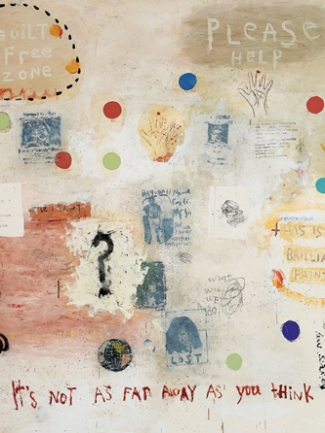
Squeak Carnwath
Oakland, Calif.
WHEN the 1906 San Francisco earthquake destroyed his shop, Frederick Meyer, a German-born cabinetmaker with links to the Arts and Crafts movement, turned disaster into opportunity. The next year he and his wife, Laetitia, opened the School of the California Guild of Arts and Crafts with 3 teachers and 43 students. They had $45 in the bank and a vision of providing rigorous training to fine artists and craftsmen alike.
That school is now the California College of the Arts, a remarkable Bay Area institution that while perhaps unfamiliar outside the region has played an important role in shaping the past 100 years of California art.
“From the beginning the unity of arts and crafts was the most important principle at C.C.A., just like it would be at the Bauhaus, which was established 12 years later,” said Peter Selz, professor emeritus of art history at the University of California, Berkeley. In 1959, while a curator at the Museum of Modern Art in New York, he exhibited two little-known painters with connections to the college, Richard Diebenkorn and Nathan Oliveira.
Both those successful artists are now among the 100 alumni and faculty members whose work is in “Artists of Invention: A Century of C.C.A.,” on view until March 16 at the Oakland Museum of California. It is a wide-ranging exhibition of diverse work: Not far from Mr. Diebenkorn’s elegant canvas is a funky ceramic woman by Viola Frey, one of Robert Bechtle’s photorealist street scenes and a video of compressed television images by Anthony Discenza. In an adjoining space a colorful 1995 Squeak Carnwath painting hangs within sight of a muscular abstract sculpture in blue-gray stoneware by Peter Voulkos and Garry Knox Bennett’s pivotal 1979 work, “Nail Cabinet,” an exquisite wood cabinet he deliberately vandalized by driving a nail into its front.
Elsewhere in the galleries a 1965 Kay Sekimachi woven piece floats like a phantasmagoric undersea creature, while John McCracken’s solitary green plank leans against a wall close to a spectral female plaster figure by Manuel Neri, a dirt-on-paper work by David Ireland and a bronze self-portrait, with tongue sticking out, by Robert Arneson.
“The fact that fine arts people and crafts people were all thrown together made a difference,” said Philip Linhares, the museum’s chief curator of art, who helped organize the exhibition and attended the college in the late 1950s.
When its founder, Mr. Meyer, began in 1907 he rented three rooms in Berkeley because, he later wrote, his “experience with students in San Francisco made me think it was better to hold the school in Berkeley where alcoholic beverages were not on sale.”
In 1936, after the growing institution had moved to a four-acre Victorian estate in Oakland, it became the California College of Arts and Crafts. In 2003, after a second campus was established in a rehabilitated Greyhound bus maintenance building in San Francisco, it was renamed the California College of the Arts. But the underlying philosophy stayed the same.
“There has always been an emphasis on technical proficiency, on craftsmanship and discipline, as much as on inspiration and intuition,” Mr. Selz said of the college.
